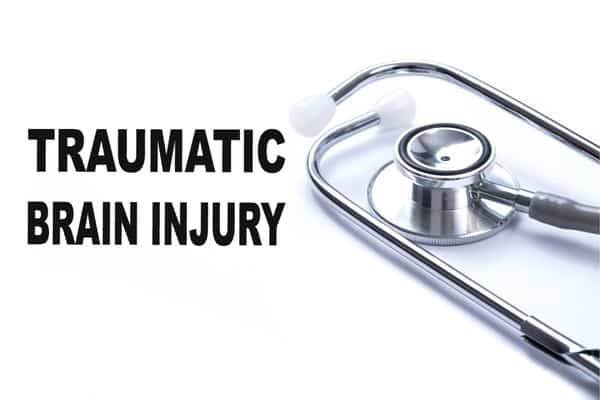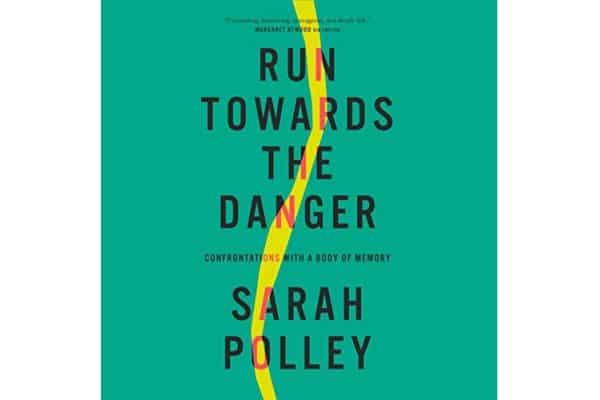Sarah Polley’s new book ‘Run Towards the Danger: Confrontations with a Body of Memory’ is made up of six essays that span her life.
The part of the book that everyone seems to be talking about is the story of her concussion, and the innovative approach to overcoming it.
The approach is the title of the book – Run Towards the Danger.
What is a Concussion
A concussion is a traumatic brain injury, often caused by a blow to the head. Concussions affect brain function and symptoms can be headaches, problems with focus and concentration, memory issues, and changes with balance and coordination.

These symptoms of a concussion may not show up immediately. They can also present in odd ways, such as personality changes or anger or aggression.
Concussion symptoms can last for days, weeks or even months.
Having a concussion, or any brain injury can be very isolating. Trying to understand and describe what is happening can be frustrating, overwhelming and frightening.
Polley is a talented storyteller, and the story of Sarah Polley’s lived experience of having and recovering from a concussion is an excellent read for anyone in a similar situation.
Sarah Polley’s Concussion
Sarah Polley got a concussion when a fire extinguisher fell on her head while she was looking in a lost and found box at her local gym.
Immediately she had difficulties with balance, being overwhelmed with noise and light. Doing the smallest activities like making dinner would get her overwhelmed and frustrated.

Shortly after that she began experiencing dizziness, nausea and migraine headaches.
Three years into her concussion testing shows that she is at the one percentile for attention span for her age and gender!
Pacing Approach to Concussion
Polley followed the usual recommendation for concussion management. Pay attention to your symptoms and listen to your body.
The advice she had been following was to “touch her threshold and then come back down“. In other words she would exert herself but then back off when she felt her concussion symptoms starting up.

She would also try assess whether something would be ‘too much for her brain’ before doing it.
But she was not improving and her life was completely changed years after the initial concussion.
Dr. Collins’ Concussion Clinic
Polley heard of a clinic that specialized in concussions from a friend who had also had a concussion. She was amazed by her friend’s improvement and decided to go to the clinic herself.
She saw Dr Collins, a concussion specialist, who was charismatic and very clear in his directions on a new approach to concussion treatment.

“Stop tracking your symptoms! Stop processing your symptoms! Don’t
waste your time!” Dr. Collins yelled on his first appointment with Polley.
Adult Concussion Symptoms
Dr. Collins decided on her type of concussion based on symptoms. He felt that Polley’s symptoms were mostly vestibular (balance issues) but that she also had post traumatic migraine and anxiety.
In his opinion, first she had vestibular symptoms which led to the anxiety. But a feedback loop had been created, causing two different systems in the brain to communicate.

Now the anxiety could ‘talk back’ to the vestibular part of the brain so that the anxiety can now turn on her vestibular symptoms.
The goal of his treatment protocol was to break this communication cycle in the brain.
Paradigm Shift: Run Towards the Danger!
What he wanted her to do is ‘Run Towards the Danger’.
Rather than thinking of her symptoms as something to avoided, she should think of symptoms as ‘opportunities’.

By using these opportunities she can increase her threshold of tolerance.
He wanted her to stop constantly monitoring her symptoms and avoiding discomfort. Instead she needed to make sure she gets daily exposure to things that cause her symptoms.
Like shopping at a grocery store, going to a crowded restaurant, or doing other cognitively challenging tasks.

In his view, avoiding things that bothered her had made it harder for her brain to cope with them. She needed to retrain her system.
When you have a concussion, you don’t have good instincts about what will make you better.
You want to lie in a dark room. You don’t want to be social. You want
to drop out of your life.That bad instinct, coupled with bad advice, makes you much, much sicker than you need to be.
Dr Collins in Sarah Polley – Run Towards the Danger: Confrontations with a Body of Memory
Physical Exercise for Adult Concussion Recovery
But how do you cope with ‘Run Towards the Danger‘ when it means pushing yourself into discomfort? Particularly when these activities can cause her days of feeling unwell?
Another important component of the treatment is ‘a rigorous routine of vestibular and physical exercise‘ that she must do every day.
A fast 20 minute walk and then repetitions of squats, weights, planks and other exercises.

When Polley mentioned to the physiotherapist that she got nauseated doing downward dogs, these were added to her exercise regimen.
A vestibular therapist gave her specific exercises. Visual therapy exercises like looking at one spot while she moves her head side to side quickly, or using a brock string to improve visual convergence.

Throwing a ball behind her and then looking over her shoulder as it is thrown back to her. Doing exercises for the first time makes her nauseous.
She is reminded that she is to increase her tolerance to environments, rather than adjust the environments to her concussion symptoms.
There was to be no lying down or napping during the day. If she felt symptoms coming on she was to do dynamic exercises or a fast walk.

She was to also keep well hydrated, eat 3 good meals a day and prioritize sleep.
New Approach to Adult Concussion Recovery
This new approach to her concussion was so different. A new idea of how to make a bruised brain work better.
She does her daily exercises. She does errands that her husband had been doing. She goes grocery shopping. She plays with her kids. She works on a screenplay. She socializes.

It hurts and she is nauseous, and her migraines start to return. But when she feels the migraines begin she goes for a fast walk or does her dynamic exercises. She finds that her headaches diminish immensely after her workouts.

Run Towards the Danger in Concussion Recovery
As the new program works a new mantra of ‘I can do hard things’ takes hold.
There is no more accommodating the concussion symptoms. No more being quiet because noise is giving her a headache.
The whole family cheers her on yelling ‘Run towards the danger Mom!’, or ‘Attack, Attack, Attack!’.

Signs of Adult Concussion Recovery
Then one day at a dinner party Polley suddenly realizes that she has understood everything that has been said in conversation during the dinner. Something she previously struggled with in a noisy setting.
She has a good time, understanding what is said and contributing in a socially appropriate way without developing a headache.

She is shocked to realize that since the concussion, even on her best days she was nowhere near feeling this well.
I am suddenly deeply aware of how far I have been from feeling like myself for the last few years. Even on my good days, during my “okay” months, I was light years away from feeling this clarity, this aliveness, this presence in the world.
I tell this to David and I start to cry, knowing now that I will get better. Until this moment
of total faith that this will work, that I will be back to myself, and of knowing what it is to be alive in my brain again, I have not registered the weight of the loss of the last few years.Three of the four years of my second child’s life. Three of my oldest child’s seven years. I have been there with my whole heart but only half my brain.
I weep for how little I knew about how altered I have been.
Sarah Polley – Run Towards the Danger: Confrontations with a Body of Memory

The moment of clarity passes but then the clarity occurs again a few days later. And then again, and then several days in a row.
After six weeks she does not have headaches, brain fog, confusion, dizziness, or fatigue anymore.

She continues with her ‘Run Towards the Danger’ approach to life. It is a paradigm shift and she almost becomes a different person.
Her next-door neighbour, who never knew her before the accident, didn’t recognize her while she was walking down the street until they were very close. “What happened to you? You look like a different person, like someone turned on the lights.” He exclaimed to her.
Run Towards the Danger Concussion Summary
Sarah Polley’s book Run Towards the Danger is a collection of six essays about her life.
The title of the book comes from advice she received from Dr. Collins, a concussion expert. ‘Run Towards the Danger’ was a paradigm shift in how she approached her concussion, and which she believes helped her regain her life.
Her program was specifically tailored to her symptoms after being assessed through a battery of tests at Dr. Collins clinic. You should always seek personalized medical attention for your own condition.
However, it is always interesting to read someone’s lived experience, particularly when they are an excellent storyteller. Her recovery story is inspiring to anyone who has had similar issues.
The steps for Sarah Polley’s concussion recovery:
- Run Towards the Danger – Do what make your symptoms worse, rather than avoid
- Do dynamic exercises or a fast walk when symptoms worsen
- Don’t monitor symptoms, monitor recovery
- A daily exercise regimen that was tailored to her symptoms
- physical exercises: squats, weights, planks etc.
- vestibular therapy exercises
- visual therapy exercises
- Slowly increase computer time
- Start working again
- Socialize
- Do errands
- Stay hydrated
- Eat well
- Prioritize sleep

